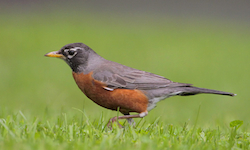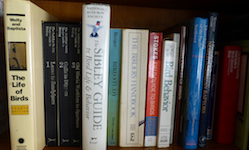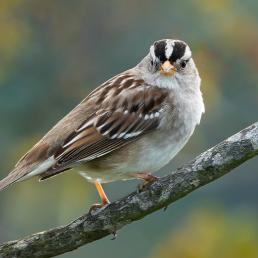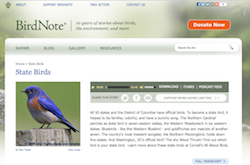

Join BirdNote tomorrow, November 30th!
Illustrator David Sibley and actor H. Jon Benjamin will face off in the bird illustration battle of the century during BirdNote's Year-end Celebration and Auction!
How do birds live, travel and survive?
Daily lessons over the school year for grade 5
|  |  | ||
| Summary | Lesson Plan | Resources |
Summary
Dickinson East School is in a densely populated in-burb of Detroit, called Hamtramck, and is one of the oldest schools in the state. Exposure to nature is limited for the students in this city-scape. But their interest in nature is very real. Around noon every day, the class listens to BirdNote on the radio or by podcast. After listening to the day’s story, the students discuss the birds and concepts introduced, view images of the birds, find their migration routes on maps or the globe, and talk about what adaptations the birds have made to survive.
Title: Bird Migrations and Adaptations
Duration: Daily, 2 minutes to listen to segment, 5 minutes (or more) to discuss
Setting: Indoors
Subject Areas: Natural Science, Social Studies
Grade Level: Fifth grade
Next Generation Science Standards:
5-LS1-1, role in food web and energy transfer
5-PS3-1, what animals need is energy that originated from the sun
5-ESS3-1, human environmental impact
Lesson Objectives:
* Students will learn where birds live and migrate
* Students will find out about special adaptations that assist in the survival of birds
* Students will learn more about birds and nature in general
How BirdNote is used: Class listens to BirdNote on radio, website, or podcast
Materials:BirdNote podcasts,BirdNote website, Eno board, pull-down map and globe, Google images
Lesson Plan
This lesson can be done daily, weekly, or as time allows.
Listen: Students listen to the two-minute BirdNote radio broadcast or podcast.
Discuss: Lead a small discussion with students about the birds introduced. The topics will include migration, habitat, food sources, adaptations, etc.
Some sample discussion questions . . .
* Why do some/these birds migrate?
* Why do they migrate to a certain area?
* Why does this bird choose this habitat?
* Why do males have brighter plumage?
* How do adaptations such as camouflage, shape of beak, arrangement of toes on the feet, etc., help this bird survive?
* Is the bird a predator? Is it a decomposer?
Looking and learning:
* Show images of the birds covered in the BirdNote story from Google or BirdNote on an Eno board. This can also include images of habitat or migration routes. (The activity can be done as a class or in small groups.)
* Use the Macaulay online library to explore more bird sounds, images, and videos of the birds in the story.
Extension: Follow one or more of the links suggested on the BirdNote webpage for that day’s show.
Resources
BirdNote
BirdNote podcasts
Local radio stations with BirdNote
Macaulay Library
Google online images
Do you have a lesson plan to share? Check out the guidelines, then download the submission form. Thank you!

